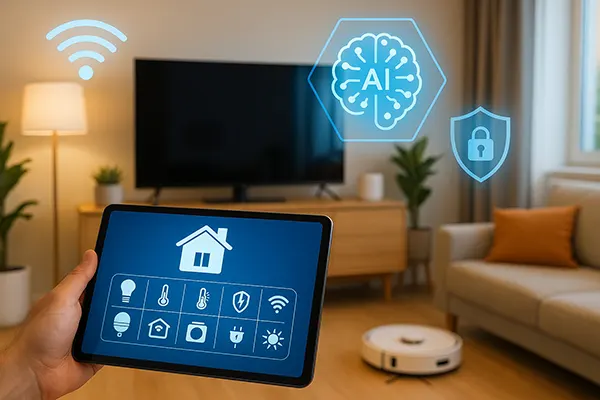
Explainable AI Strategies in User-Facing Products: UX, Design and Ethics
As artificial intelligence continues to shape everyday tools and decision-making systems, the need for transparency has never been greater. Explainable AI (XAI) is a critical concept ensuring that users not only benefit from automated decisions but also understand why those decisions were made. In 2025, explainability has evolved from an experimental research goal to a core requirement in AI-driven design and ethical innovation.
Core Methods Behind Explainable AI
Explainable AI relies on several established methods that help interpret complex machine learning models. Among the most widely used are LIME (Local Interpretable Model-Agnostic Explanations), SHAP (SHapley Additive exPlanations), attention maps and counterfactual explanations. These techniques translate the opaque reasoning of neural networks into information that designers and users can comprehend.
LIME provides local explanations by approximating a model’s behaviour around a single prediction, allowing users to see which features influenced a result. SHAP, based on cooperative game theory, goes further by quantifying the contribution of each feature across the dataset. Attention maps, popular in image and language models, visualise which areas or words were most significant to the algorithm’s output.
Counterfactual explanations, on the other hand, focus on “what-if” scenarios. They reveal how small input changes—such as income or age—could alter an AI’s decision. This approach is becoming particularly valuable in 2025’s regulatory landscape, where users have the right to understand automated outcomes in sectors such as finance or healthcare.
Integrating Explanations into UX Design
Building user trust through explainability starts with thoughtful interface design. The challenge lies in presenting complex AI reasoning in a clear, accessible format without overwhelming the user. Designers are now embedding visual cues, confidence scores and feature impact charts directly into dashboards and mobile apps.
For example, in fintech applications, credit scoring tools often display short textual justifications alongside scores—phrases such as “income stability” or “payment history” ranked by importance. In healthcare systems, AI-generated diagnoses include interpretability panels showing the areas of an image that led to a conclusion, increasing clinician confidence and accountability.
UX teams use progressive disclosure—offering simple summaries first and deeper insights on demand. This layered approach reflects human-centred design principles and aligns with modern data protection laws, where transparency must coexist with usability and model protection.
Evaluating Explainability through User Metrics
It’s not enough to provide explanations; they must also be meaningful. In 2025, product teams employ UX metrics and behavioural testing to determine whether users find AI explanations useful and trustworthy. Metrics such as task completion time, perceived trust, and comprehension scores reveal how well users interact with explainable systems.
A/B testing remains a popular method for comparing different explanation formats. Some systems perform better with visual heatmaps, while others benefit from concise textual explanations. Fintech and medical applications, for instance, demonstrate that visual cues often enhance comprehension faster than text-based reasoning.
Qualitative research is also essential. Interviews and eye-tracking studies show that too much transparency can confuse rather than clarify. Therefore, balancing detail and simplicity becomes a vital UX goal when designing explainable interfaces.
Real-World Examples Across Industries
Explainable AI is actively transforming how companies design user-facing systems. In fintech, European banks now employ SHAP-based visualisation tools to justify credit approval processes, ensuring compliance with the EU’s AI Act. These tools reduce bias and improve customer satisfaction by explaining which financial factors matter most.
In healthcare, explainable diagnostic models support doctors by identifying how input data such as medical images, patient records or genetic information influenced a recommendation. For example, Google Health and IBM Watson use attention visualisations to ensure transparency and medical accountability.
Meanwhile, advertising and recommendation engines apply counterfactual reasoning to personalise experiences without losing user trust. Transparent content suggestions—backed by user data insights—enhance ethical engagement and compliance with GDPR principles.

Ethical Considerations and Trust in Explainable AI
As AI becomes more interpretable, ethical dilemmas grow more visible. Full transparency can expose sensitive model data or invite adversarial attacks. Therefore, modern explainability frameworks balance openness with model protection. Ethical design in 2025 requires companies to clearly define which explanations are safe to share and which must remain confidential.
Trust is another cornerstone of explainable AI ethics. Users tend to trust systems that communicate reasoning in relatable language, supported by verifiable evidence. Studies by the OECD and the European Commission show that human trust increases when AI outputs align with personal expectations and ethical standards.
Companies are now forming cross-disciplinary ethics boards that include designers, engineers and behavioural scientists. These teams evaluate whether explanations support fairness, accessibility and inclusivity—ensuring AI remains a responsible co-pilot rather than a black box of decision-making.
The Future of User-Centred Explainability
By 2025, explainable AI is shifting from an optional enhancement to a legal and ethical necessity. As international AI governance frameworks mature, transparency becomes a competitive advantage. The most successful companies will be those that integrate explainability into every design stage, from data collection to interface feedback.
Next-generation design tools now include built-in explainability features, enabling UX teams to prototype “why” elements as easily as buttons or icons. This approach ensures that end-users remain informed, empowered and confident when interacting with AI-powered systems.
Ultimately, the future of explainable AI is not just about compliance but about empathy — creating systems that communicate with people in ways they understand, respect and trust.



